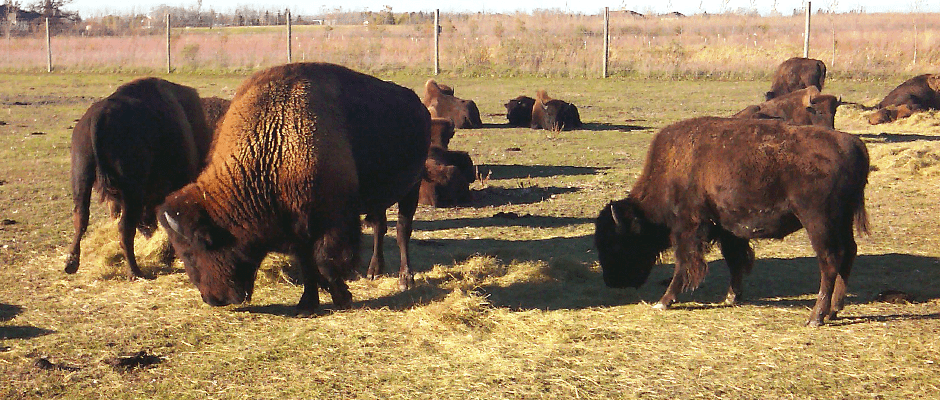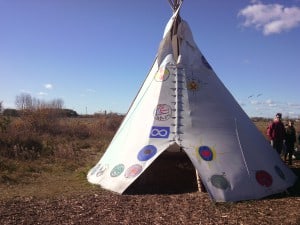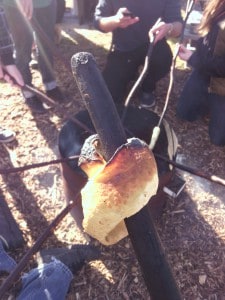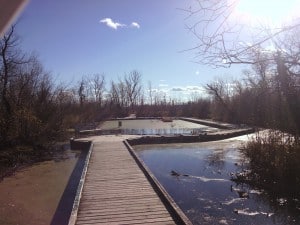Share this article
Bannock, Bison and how to Throw a Spear the Manitoba Way
Despite the apathetic look of the animals surrounding our small tour bus, we walked slowly to the open front door, one at a time, to take a few photos of the massive bison.
The bus was stopping at intervals after driving slowly through the herd so as not to disturb the animals, and it seemed to work — several of the calves didn’t even bother to stop milking as we passed. Others spared us a disinterested glance while chewing grass.
The bison herd at FortWhyte Alive, an environmental, education and recreation center outside Winnipeg, has an alpha male and a self-sustaining population of around 30 animals. Several are harvested every year, some of the meat ending up on plates at FortWhyte’s restaurant. Unlike many animals that turn away from the wind in the winter, bison are shielded by thick fur that they were in the process of growing during our field trip as part of The Wildlife Society’s 2015 conference in Winnipeg.
Earlier that day, we’d walked through a forested part of the area, hot on the acrid scent of wild cranberry in the air. The site where FortWhyte sits hosted an early 20th century clay and gravel mine for cement materials, but the Wildlife Foundation of Manitoba reclaimed the land as potential wildlife habitat after the mid-1900s. In the 1980s, the focus eventually shifted from conservation to the environmental education that continues today.
A volunteer guide then showed us how to throw atlatls — a kind of javelin — that hunting ancestors of most humans used at some point. After the physical stress of living up to our prehistoric ancestors, we needed food, and bannock was on the plate, er, stick.
Bannock, at least in the FortWhyte sense, is a kind of flour dough wrapped around a stick and cooked directly over the fire. Succulent and buttery, it was the perfect snack to enjoy inside a Plains Cree tipi, as the October wind blew outside.
FortWhyte is alive with birds. During the bison safari, hundreds of Canada geese lift off the bison plain in a massive curtain before the bus. But dozens of species of chickadees, ducks and woodpeckers are found in the restored marsh and wetland areas of the reserve.
“We are in the Mississippi flyway here,” said A.L. Mickey, a volunteer tour guide for the field trip. The flyway is about 50 miles wide, and birds such as Canada geese sometimes use it to fly as far south as Nebraska.
The pond had mallards (Anas platyrhynchos) and other ducks while we saw a downy woodpecker (Dryobates pubescens), a black-billed cuckoo (Coccyzus erythropthalmus), black-capped chickadees (Poecile atricapillus) and other species at the birdwatching stations in marsh and forest nearby. Two white-tailed (Odocoileus virginianus) deer led us along the trail for a moment before flitting into the forest, perhaps realizing that we’d recently been trained on the finer points of atlatl use.
We then went into the education center to learn about the relationship between burrowing owls (Athene cunicularia) and black-tailed prairie dogs (Cynomys ludovicianus). The owls use old prairie dog burrows as nests, and sometimes eat young prairie dogs.
Fresh from the experience, we made our way back to the tour bus, but not before I had an angry encounter with a Canada goose. I believe I just passed too closely for the bird’s comfort, but perhaps it too was wary about my atlatl training.











